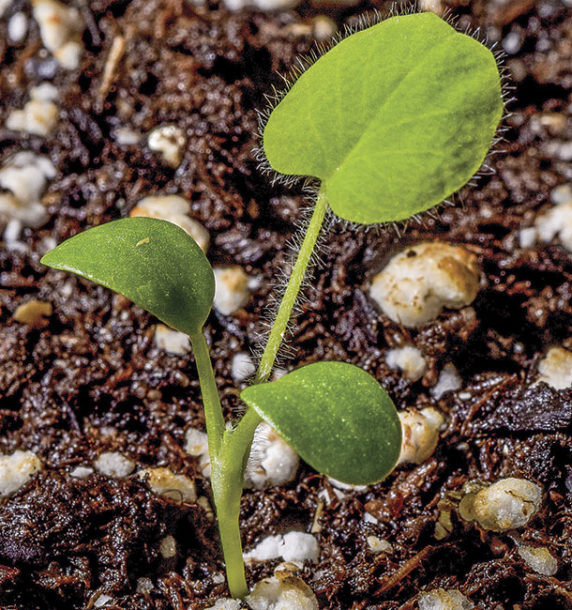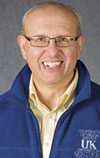This principle has great application to frost seedings of clover.
Literally thousands of acres of pasture and hay fields are overseeded with clover, much of it frost-seeded in late winter. The benefits of clover are significant, ranging from biological nitrogen fixation, higher quality and yield, and emerging evidence it contains certain compounds (isoflavones) which reverse the vasoconstrictive effects of toxic endophyte tall fescue.
Frost seeding is an attractive method of clover establishment because of the minimal equipment requirements – usually a spinner seeder attached to a moderate horsepower tractor.
Clovers (red, white and crimson are major examples) can be expected to establish successfully after being frost-seeded because they germinate quickly, tolerate shade, and have aggressive root and shoot growth as seedlings. Their small, smooth seed is easily moved into the top quarter-inch of soil by weather or hoof action.
Clovers have so many positive establishment traits it is easy to forget the requirements of forage establishment must still be met. In other words, the rule has not been suspended for clovers just because we are in a hurry (remember my fatherly principle above). Here are a few reminders of establishment basics to ensure you have the best chance of getting clover started from a frost seeding (and to keep you from having to do it over).
1. Address soil fertility needs. Get a current soil test and apply the needed nutrients. Clovers need soil that is pH 6.5 to 7 and medium to better in phosphorus and potassium. Do not apply additional nitrogen except for that supplied from diammonium phosphate, if used to supply the needed phosphorus. But get the soil test; anything else is just a guess.
2. Select a good variety. Choose an improved variety with known performance and genetics. Choosing a better red clover variety can mean as much as 3 tons of additional hay and long stand life, compared to common seed (variety unknown).
Certified Kenland produced 30 percentage units more yield than uncertified Kenland and more than common red clover across 31 different Kentucky trials. The University of Kentucky has extensive data available on yield and persistence of white and red clover for hay or pasture (University of Kentucky forage extension home).
3. Spread enough seed. A typical seeding rate is 8 to 12 pounds of red or 1 to 3 pounds of white/ladino clover per acre. Applying the minimum (8 pounds red and 1 pound white) will result in over 60 seeds per square foot on the field (50 red, 18 white).
4. Make sure seed lands on bare soil. Excess grass or thatch must be grazed or disturbed until there is bare ground showing prior to overseeding. The biggest cause of seeding failure with frost seedings is too much ground cover. Judicious cattle traffic or dragging with a chain harrow can accomplish this.

5. Get good seed-soil contact. Frost seedings depend on rain and snow or the freeze-thaw action of the soil surface to work the clover seed into the top one-fourth inch of soil. A corrugated roller can also be used soon after seeding to ensure good contact.
6. Control competition next spring. Do not apply additional nitrogen on overseeded fields next spring, and be prepared to do some timely mowing if grass or spring weeds get up above the clover. Clover is an aggressive seeding but will establish faster and thicker if grass and weed competition is controlled.

Clover can be reliably frost-seeded into existing grass pastures with a little attention to establishment basics. Soil fertility, variety, seeding rate, seed placement and competition control are the major contributors to success. Address these basics, and you minimize your need to do the frost seeding over next year. ![]()
PHOTO 1: Clovers can be frost-seeded successfully into grass pastures because of their quick germination, tolerance to shade, and aggressive root and shoot growth as seedlings. Proper attention to establishment basics helps ensure success.
PHOTO 2: Bare soil should be showing for successful clover overseeding, as shown here.
PHOTO 3: The heavy ground cover seen here will prevent clover establishment. Photos by Jimmy Henning.

-
Jimmy C. Henning
- Forage Extension
- University of Kentucky
- Email Jimmy C. Henning












